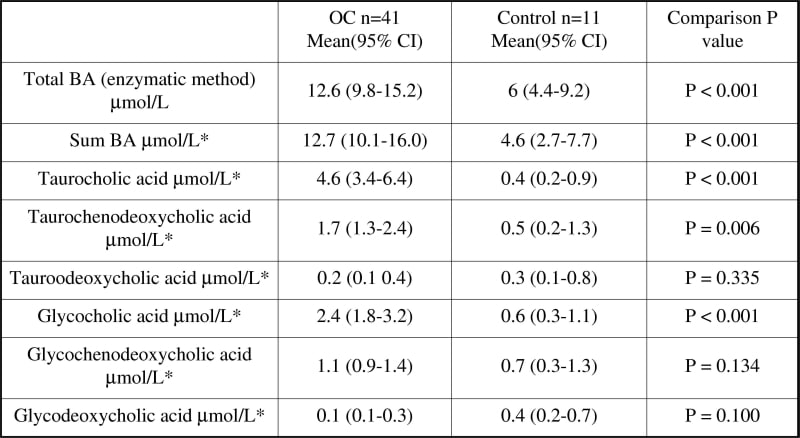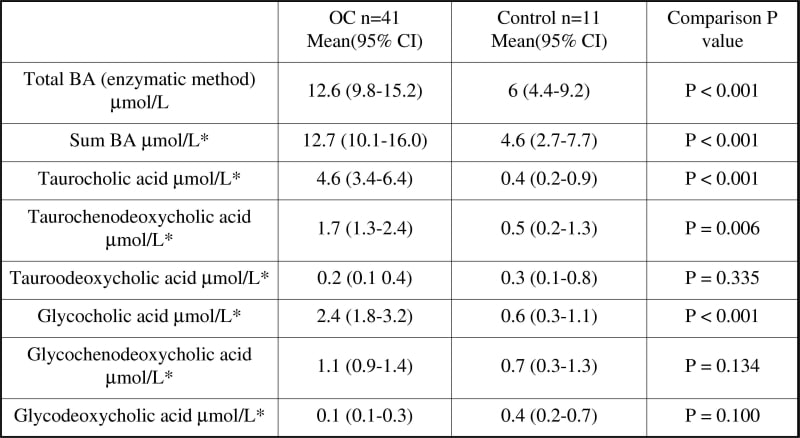Assessment of serum bile acids is central to the diagnosis of many liver disorders. The methods currently available are time consuming and do not allow the simultaneous measurement of a range of bile acids and their associated conjugates. The aim of this study was to develop a high performance liquid chromatography (HPLC) electrospray ionisation mass spectrometry (MS) technique to investigate bile acid metabolism in human serum from normal pregnant women and pregnant women with the liver disorder obstetric cholestasis (OC). Bile acids profiles were investigated in fasted serum from pregnant women with OC (n=41) and normal healthy pregnant women (controls, n = 11) in the third trimester 37.6±1.3 and 39.9 ±1.4 weeks’ ± SD respectively. Informed consent was obtained. Comparisons were made using linear regression with robust standard errors and geometric means with 95% confidence intervals (CI). A HPLC-MS technique was validated for the simultaneous evaluation of low and high abundance conjugated and unconjugated bile acids in human serum incorporating efficient resolution, high sensitivity, good reproducibility and a low detection limit (50pg). Total bile acids were found to be significantly elevated in the OC group (Table 1), however, more relevant information was gained by investigating the differential bile acid profile and state of conjugation. Table 1 details the most abundant bile acids in serum. We demonstrated that bile acids are predominately conjugated with glycine and taurine in the maternal circulation. In OC taurine conjugates predominate and primary bile acids account for the majority of the increases in serum bile acid concentrations. This method has been used to measure abnormal bile acid profiles in women with OC and will potentially be a useful tool for the assessment of serum bile acid profiles in other liver diseases. An improved evaluation of bile acid metabolism may provide better diagnostic or pathophysiological information in liver disease.
King's College London (2005) J Physiol 565P, PC32
Communications: Development of a novel method for the simultaneous measurement of free and conjugated bile acids in human serum from pregnant women with obstetric cholestasis
Dann, Anthony Thomas; Anna, Kenyon P; Seed, Paul T; Poston, Lucilla ; Mallet, Anthony I; Shennan, Andrew H; Tribe, Rachel M;
1. Maternal and Fetal research unit, Department of Reproductive Health, Endocrinolgy and Development, King's College London, London, United Kingdom. 2. School of Science, Greenwich University, Chatham, Kent, United Kingdom.
View other abstracts by:
Table 1. Bile acid (BA) biochemistry.* measured by HPLC-MS
Table 1. Bile acid (BA) biochemistry.* measured by HPLC-MS
Where applicable, experiments conform with Society ethical requirements.


